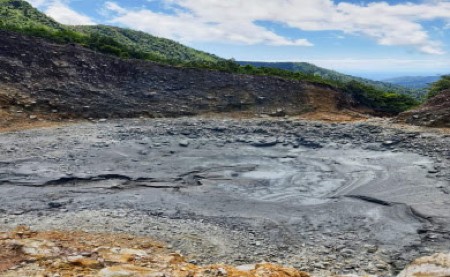UWI Researchers Monitoring Water Levels at Dominica’s Boiling Lake
PORT OF SPAIN, Trinidad – The Seismic Research Centre (SRC) at the St. Augustine campus of the University of the West Indies (UWI) says the water levels at Dominica’s Boiling Lake, have changed significantly in recent days, saying it is a phenomenon that has occurred several times since 1876.
 Water levels have dopped at Boiling Lake in Dominica“The most recent period instability was observed in December 2023 and in the following months, guides and Forestry officials have reported changes in the lake levels with the latest occurring during the month of March,” the SRC said in a statement posted on its Facebook page.
Water levels have dopped at Boiling Lake in Dominica“The most recent period instability was observed in December 2023 and in the following months, guides and Forestry officials have reported changes in the lake levels with the latest occurring during the month of March,” the SRC said in a statement posted on its Facebook page.
It said on March 29, the lake was observed to once again experience a significant drop in water levels, when there was little to no water observed in the lake.”
But the SRC said that the observed changes in water levels and activity at the Boiling Lake “are not necessarily related to increased volcanic activity in the area,” adding “during these episodes, harmful gases such as carbon dioxide, can be released and small steam explosions may also occur.
“This most recent cessation of geothermal activity at the lake may be indicative of blockages of underlying vents, which feed into the lake and is of concern as clearing of this blockage can occur without warning”.
The SRC said that together with the Office of Disaster Management in Dominica, they will continue to monitor the situation.
The Boiling Lake is a flooded fumarole located in Morne Trois Pitons National Park, a World Heritage Site . The lake, located 6.5 miles east of Dominica’s capital, Roseau, is filled with bubbling greyish-blue water that is usually enveloped in a cloud of vapour.
The Boiling Lake is approximately 200 to 250 feet across and is the second-largest hot lake in the world after Frying Pan Lake, located in Waimangu Valley near Rotorua, New Zealand.


